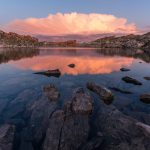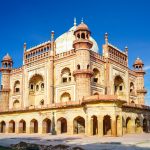Table of Contents
Rajasthan doesn’t do subtle. Cities glow in full color, blue walls, pink facades, golden forts. Camels share the road with motorbikes. Bazaars spill into alleyways. Temples echo with bells, and palaces still wear their old glory.
It’s loud, intense, and absolutely worth every day you give it. Two weeks is enough to see the highlights without rushing. Here’s how to plan a route that hits the colors, the chaos, and the quiet moments in between.
Day 1–2: Jaipur (The Pink City)
Start Bold and Bright
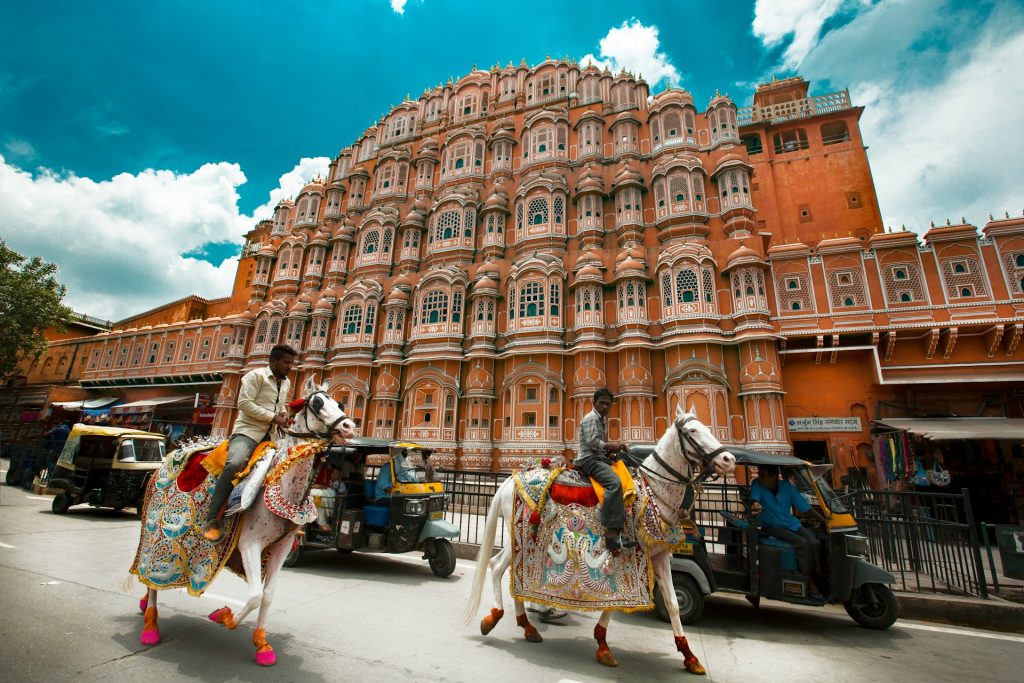
Jaipur is a knockout. It’s where Rajasthani architecture meets royal nostalgia, and it doesn’t ease you in gently.
What to do:
- Visit Amber Fort — go early for softer light and fewer crowds.
- Walk the City Palace and Hawa Mahal (Palace of Winds).
- Shop for block-printed textiles, jewelry, and spices in Johari Bazaar and Bapu Bazaar.
- Catch the sunset from Nahargarh Fort overlooking the city.
Budget tip: Skip the elephant rides at Amber. Take the jeep or hike — it’s faster and more respectful.
Where to stay: Guesthouses in the old city or boutique hotels near Bani Park offer character without the price tag.
Day 3–4: Pushkar
Small Town, Big Spirit
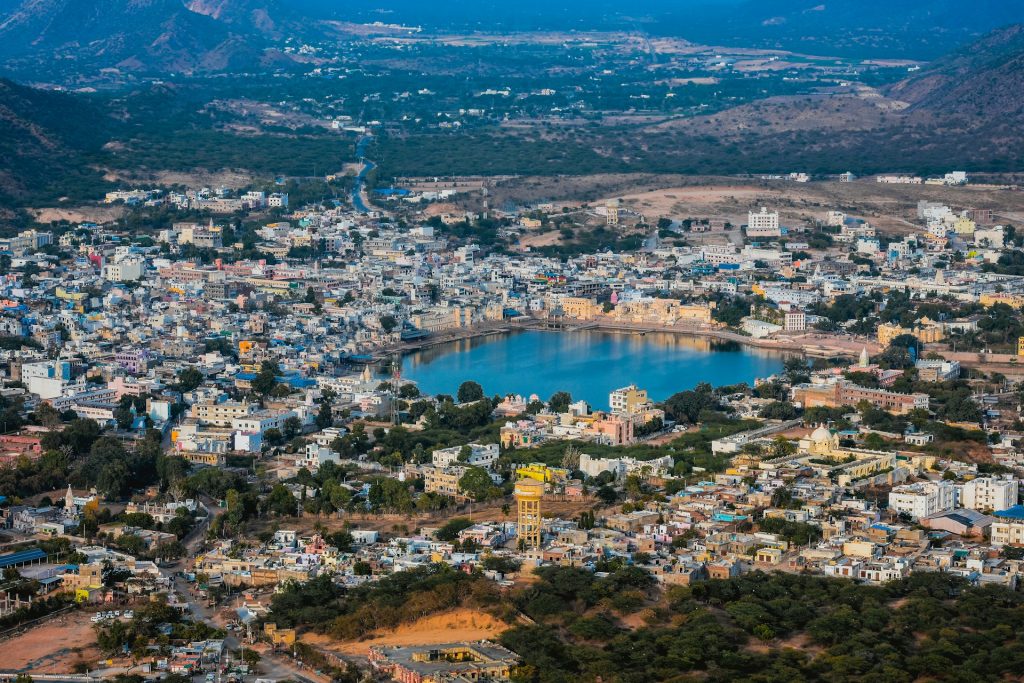
A few hours from Jaipur, Pushkar is quieter but full of atmosphere, holy ghats, narrow lanes, rooftop cafés, and a lakeside that glows at sunset.
What to do:
- Walk the Pushkar Lake ghats in the early morning.
- Visit the Brahma Temple — one of the few dedicated to the creator god.
- Shop for leather journals, silver jewelry, and hand-painted scarves in the local market.
- Take a short camel ride into the dunes if you’re not heading to the desert later.
Pushkar is easy to explore on foot. It’s also vegetarian by law, so expect great thalis, but no meat or alcohol inside city limits.
Where to stay: Rooftop hostels or low-key guesthouses right off the ghats.
Day 5–6: Jodhpur (The Blue City)
Color, Forts, and Rooftop Views
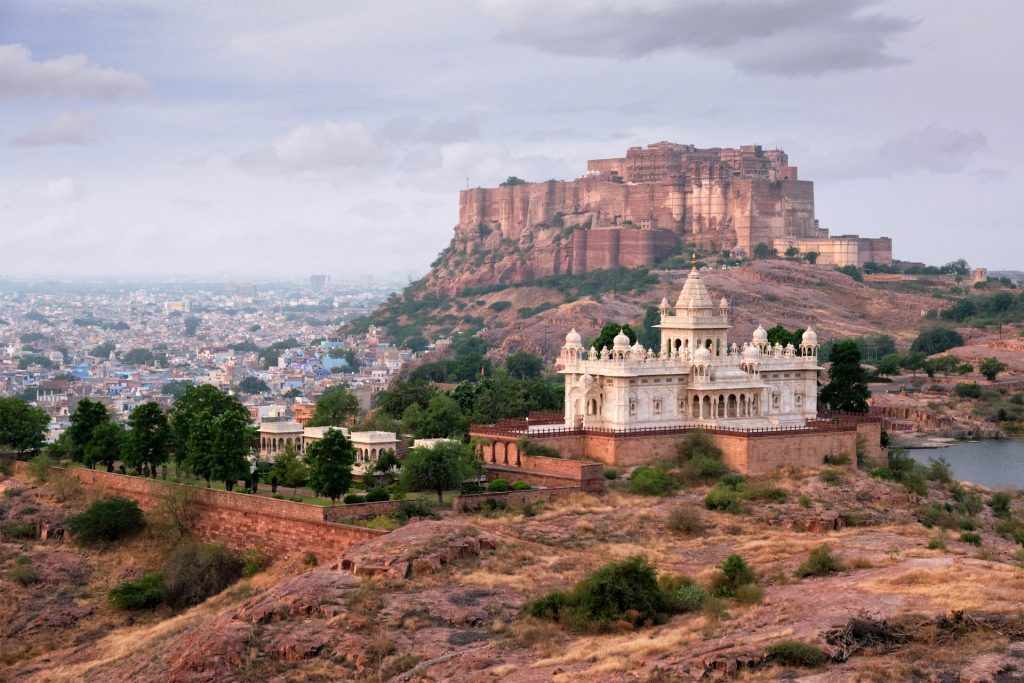
Jodhpur rises from the desert in shades of indigo, with Mehrangarh Fort towering over a maze of blue houses.
What to do:
- Spend a morning at Mehrangarh Fort; the museum is worth it, and the views are some of the best in Rajasthan.
- Wander the old city, look for hidden cafés and murals in the blue lanes.
- Explore Toorji Ka Jhalra, an ancient stepwell turned hangout spot.
- Visit the clock tower market for spices, bangles, and snacks.
Sunset tip: Head to Rao Jodha Desert Rock Park for golden-hour walks with fort views.
Where to stay: Guesthouses inside the blue city for full immersion. Rooftop cafés double as breakfast spots with unbeatable panoramas.
Day 7–8: Udaipur (The White City)
Lakes, Palaces, and Calm
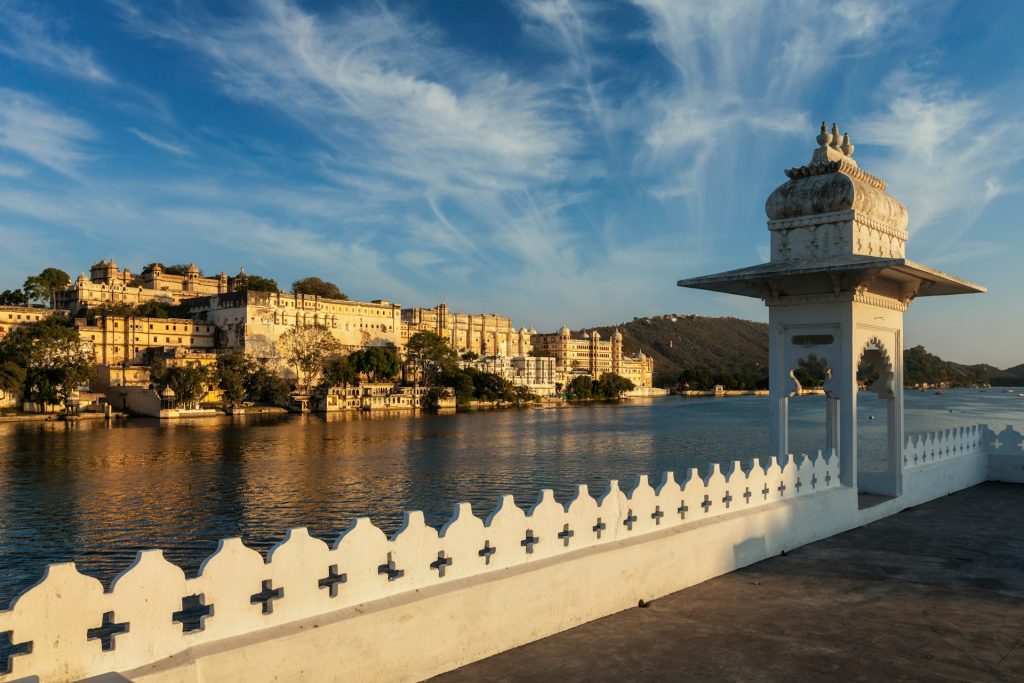
Udaipur feels softer. White buildings line the lake, boats glide past island palaces, and the city breathes a little slower.
What to do:
- Tour the City Palace, a sprawling complex right on the water.
- Take a boat ride on Lake Pichola – sunset is ideal.
- Walk up to the Monsoon Palace for panoramic views.
- Catch a cultural show at Bagore Ki Haveli – dance, puppetry, and music in a historic courtyard.
Food tip: Udaipur’s rooftop restaurants are everywhere, try local specialties like dal baati churma and laal maas with a lake view.
Where to stay: Lakeside guesthouses in the old city or across the bridge in quieter Hanuman Ghat.
Day 9–10: Mount Abu (Rajasthan’s Hill Station)
Cool Air, Jain Temples, and Scenic Breaks
Mount Abu is Rajasthan’s only hill station, offering cooler air and a change of pace after the desert cities.
Why go:
- Hike to Sunset Point or Honeymoon Point for views over the Aravalli Range.
- Visit the Dilwara Temples for intricate marble carvings incredibly preserved.
- Chill by Nakki Lake, or take paddle boats if you’re feeling touristy.
The vibe is relaxed, great for resetting after the whirlwind of city travel.
Where to stay: Mid-range hotels or forest guesthouses away from the busy center.
Day 11–12: Jaisalmer (The Golden City)
Desert Forts and Sand Dunes
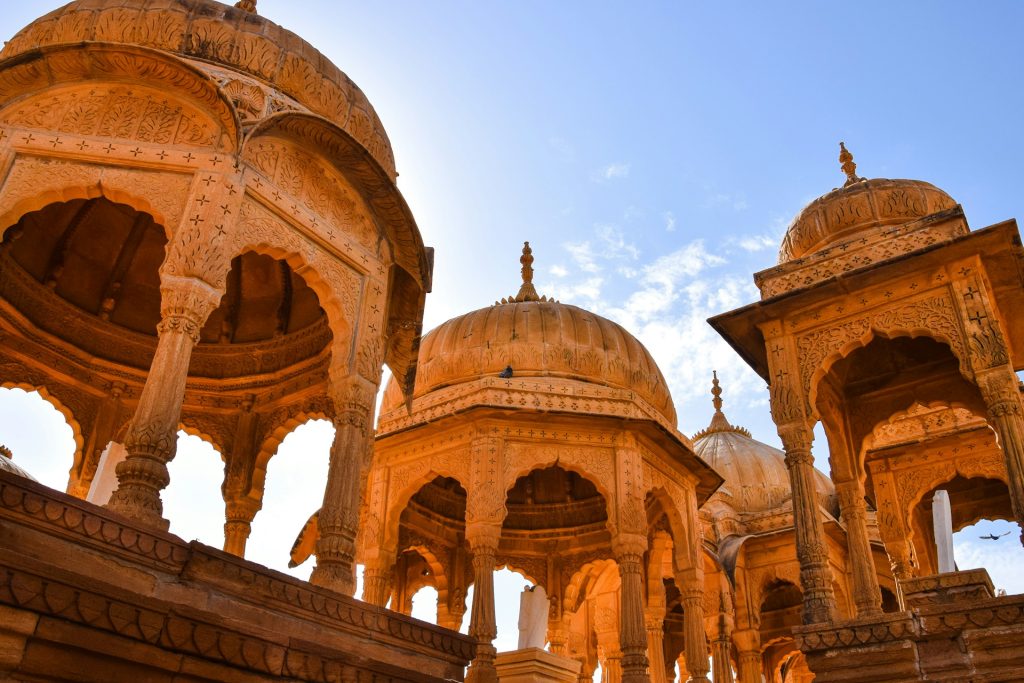
Far west, near the Pakistan border, Jaisalmer rises from the sand like a mirage. The golden sandstone glows at sunset, and the streets inside the living fort feel lost in time.
What to do:
- Explore Jaisalmer Fort, one of the few still inhabited.
- Wander through Patwon Ki Haveli, ornate merchant houses with beautiful carvings.
- Head out on a camel safari into the Thar Desert. Spend a night under the stars or just do a sunset ride.
Hot tip: The fort is stunning, but staying inside can stress the ancient structure. Choose a guesthouse just outside the walls with a rooftop view.
Where to stay: Small hotels or heritage havelis near the fort entrance.
Day 13–14: Bikaner or Return to Jaipur
A Quieter End or a Return Jump
Option 1: Bikaner
Less touristy than other cities, with great food and beautiful architecture.
- Visit Junagarh Fort and the Lalgarh Palace.
- Try the legendary Bikaneri bhujia (spiced snack) and rasgulla from local sweet shops.
- Stop by the Karni Mata Temple (rat temple) — fascinating or terrifying, depending on your view.
Option 2: Return to Jaipur
End where you started for easier logistics and more time to explore anything you missed.
Tips for Traveling Through Rajasthan
- Trains and buses connect most cities. Book in advance, especially for long-haul.
- Private cars with drivers are common and not as pricey as you’d think, especially if you’re splitting costs.
- Pack warm layers — desert nights get cold, even when days hit 40°C.
- Respect local customs, especially in temples and small towns. Cover shoulders and knees when needed.
- Always carry small change for tips, chai, and quick market snacks.
This route blends history, chaos, color, and quiet, and leaves just enough space for detours. You’ll leave with dusty shoes, a full camera roll, and at least one suitcase that’s now heavier with textiles and spices.

I’m Garrett, a seasoned photojournalist with a passion for uncovering the world’s hidden treasures. My journey is fueled by a deep curiosity for diverse cultures and breathtaking landscapes. When I’m not behind the lens capturing the world’s wonders, you can find me exploring underwater realms or sharing my passion for discovery with my two adventurous children.


